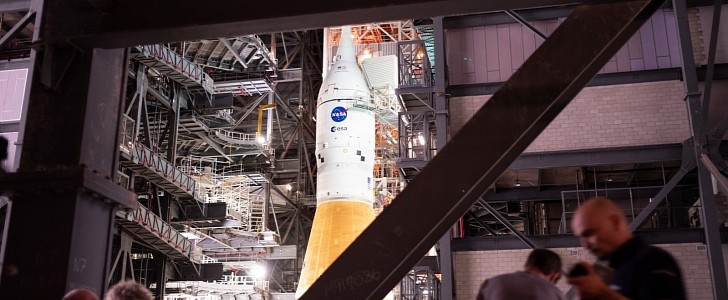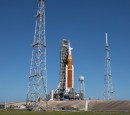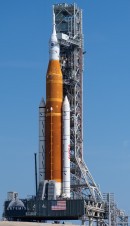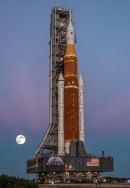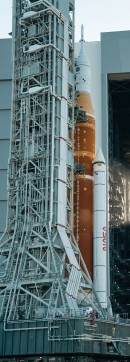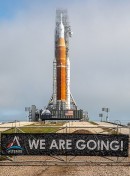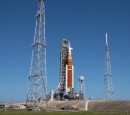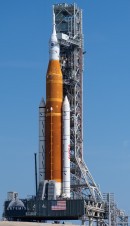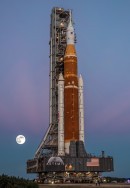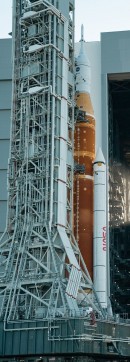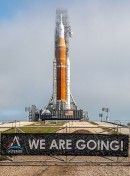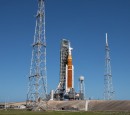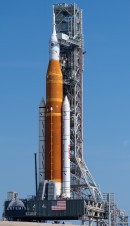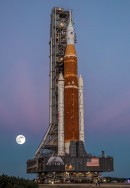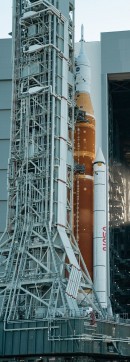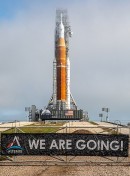After three consecutive launch scrubs for a multitude of sometimes head-scratching reasons, NASA's Artemis I mission and its SLS booster rocket are due to depart the Vehicle Assembly Building one more three-mile (4.8 km) trip to Launch Pad 39B sometime this coming November.
Between the 12th and 27th of November, a launch window is due to open that, according to NASA personnel, gives the SLS rocket its best chance of avoiding weather anomalies sufficient enough to call for yet another scrub. After the devastation brought on by Superstorm Ian, one can only wonder whether the prospects of space launches during Florida's hurricane season are viable going forward, should more storms of Ian's caliber come to pass.
But in the short term, the relatively stable weather conditions in Florida relative to the late summer give the best chance of finally getting the SLS rocket capable of lifting as much as 27 tons into trans-lunar injection into Low Earth Orbit. Ultimately, NASA does not have the final say as to whether or not launch conditions are correct for a go-ahead. Instead, that responsibility lies with the United States Space Force's 45th Weather Squadron.
Meanwhile, the SLS team will be spending its time in the VAB attending to issues that plagued the rocket in its first two launch attempts on August 29th and September 5th, respectively. First, with temperature sensors inside one of the first stage RS-25D engines, followed by a leaking fuel tank seal between the LC-39B umbilical tower and the rocket itself. In the meantime, flight hardware for subsequent Artemis II and III missions is progressing slowly at facilities inside the Kennedy Space Center and dozens of other places across North America and Europe.
All the while, the first mission hasn't even left the ground. But don't fret. Launch scrubs are a part of life in space flight, especially when the hardware involved is meant to carry humans. In spite of its flaws, the SLS is still far and away mankind's best bet to get back to the Moon, Mars, and who knows where else.
But in the short term, the relatively stable weather conditions in Florida relative to the late summer give the best chance of finally getting the SLS rocket capable of lifting as much as 27 tons into trans-lunar injection into Low Earth Orbit. Ultimately, NASA does not have the final say as to whether or not launch conditions are correct for a go-ahead. Instead, that responsibility lies with the United States Space Force's 45th Weather Squadron.
Meanwhile, the SLS team will be spending its time in the VAB attending to issues that plagued the rocket in its first two launch attempts on August 29th and September 5th, respectively. First, with temperature sensors inside one of the first stage RS-25D engines, followed by a leaking fuel tank seal between the LC-39B umbilical tower and the rocket itself. In the meantime, flight hardware for subsequent Artemis II and III missions is progressing slowly at facilities inside the Kennedy Space Center and dozens of other places across North America and Europe.
All the while, the first mission hasn't even left the ground. But don't fret. Launch scrubs are a part of life in space flight, especially when the hardware involved is meant to carry humans. In spite of its flaws, the SLS is still far and away mankind's best bet to get back to the Moon, Mars, and who knows where else.
